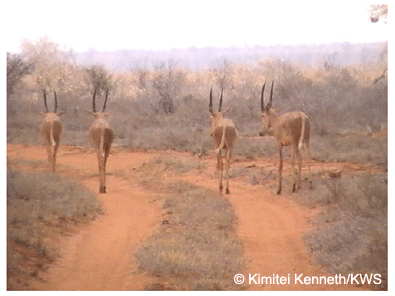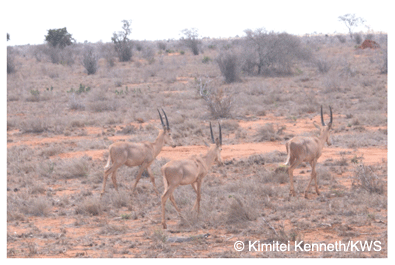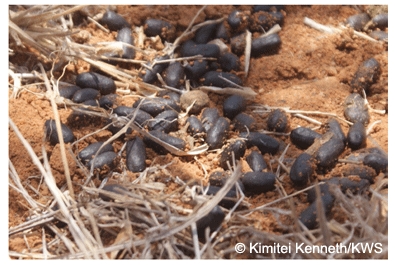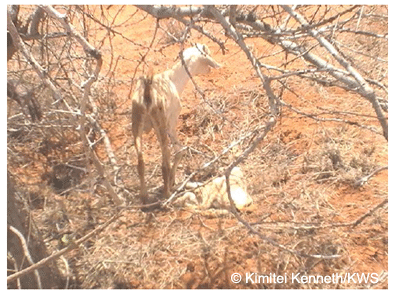Here is the latest blog from Kimitei, our EDGE Fellow working on the critically endangered hirola antelope in Tsavo East National Park, Kenya.
In both wild and domestic ungulates, gastrointestinal parasites are widespread and can be considered a threat to small populations. Because most of these parasites infect multi-hosts, interactions between hosts’ species can play an important role in transmission of the parasites. Long term monitoring of the Tsavo hirola population got a boost during the month of September when Justin Mugendi a student from Moi University came in with an interest to carry out a research on gastro-intestinal parasites of hirola and see the risk of there interactions with livestock. A comparison will be done for Tsavo and Arawale populations.
We have gone to the field with him thrice. The first day we searched for hirola but could not manage to sight even one due to the dryness prevailing in Tsavo. Carnivores are easily sighted here.
The second day we were lucky to spot one group. This group was shy and could not wait for our approach. They kept about 750 meter distance from us. Also, the area was bushy and we could not manage to collect any of fecal sample.
The third day came with my expectations very high. Searching for not more than two hours, we sighted a group of 5 yearling females. The group structure was unique to me since I started the hirola monitoring. Yearling females moving alone! The group was not shy and gave us ample time to study them. I suspected the group to belong to the large group of 25 I had identified before. This is yet to be confirmed.
We spend more than three hours monitoring the group for some fecal samples. Oh yes! At last three samples were collected from three females out of the five.
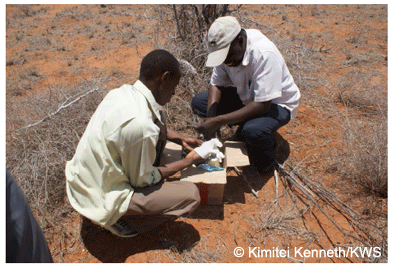
Later long, we came across 2 kids (twins) of a goat just 200 meters from the point we sighted the hirola. The female kid was death while the male one was alive but quiet weak due to lack of water. We also managed to collect the fecal samples for comparison.
Interested on this? Log in soon for more!!!!!!!!!

